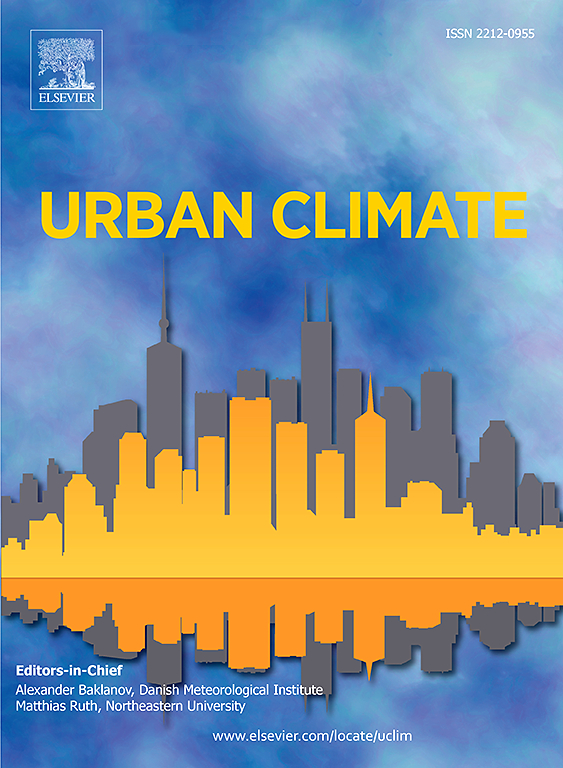城市气候的时空建模:利用全球时间卷积关注网络增强能量预测
IF 6.9
2区 工程技术
Q1 ENVIRONMENTAL SCIENCES
引用次数: 0
摘要
城市气候挑战和日益重要的时空大数据促使人们广泛探索在城市环境中整合智能电网和可再生能源,如太阳能发电。确保这些系统的稳定性和弹性是至关重要的,而准确预测电力需求和供应是实现这一目标的关键因素。时间卷积神经网络(TCNN)是近年来发展起来的一种很有前途的时空建模方法。为了进一步提高TCNN的准确性和时间建模效率,我们开发了颞卷积注意神经网络(TCAN),增强了TCNN的感受野覆盖。然而,在多步自回归预测中,TCAN不能有效地利用较早的输入时间步进行后期预测,这限制了其在电力序列预测中的应用。本文引入了基于时空大数据的深度学习模型GTCAN-P和GTCAN-M,进一步改进了TCAN。这些模型分别通过填充和屏蔽机制允许网络访问所有过去的时间步长。在实际电力数据集(包括两个建筑能耗数据集和三个太阳能发电数据集)上评估了所提出方法的有效性,并与统计模型和最先进的深度学习模型进行了比较。结果表明,GTCAN-P和GTCAN-M可以解决TCAN的局限性,并在城市能源管理场景中提供更准确的电力需求和供应预测。本文章由计算机程序翻译,如有差异,请以英文原文为准。
Spatial-temporal modeling for urban climate: Enhancing energy prediction with global temporal convolutional attention networks
Urban climate challenges and the growing significance of spatial-temporal big data have led to extensive exploration of integrating smart grids and renewable energy sources, such as solar electricity, in urban environments. Ensuring the stability and resilience of these systems is paramount, and accurately forecasting electrical energy demand and supply is a crucial element in achieving this objective. Temporal Convolutional Neural Networks (TCNN) have recently emerged as a promising method for spatial-temporal modeling. To further improve the accuracy and temporal modeling effectiveness of TCNN, the Temporal Convolutional Attention Neural Network (TCAN) was developed, enhancing the receptive field coverage of TCNNs. However, TCAN has a limitation in that it cannot effectively utilize earlier input time steps for later predictions in multi-step autoregressive forecasting, which constrains its application in electricity series forecasting. In this work, novel deep learning models, GTCAN-P and GTCAN-M, based on spatial-temporal big data are introduced to further improve TCAN. The models allow the network to access all past time steps by employing padding and masking mechanisms, respectively. The effectiveness of the proposed methods was evaluated on real-world electricity datasets, including two building energy consumption datasets and three solar power generation datasets, and compared with statistical models and state-of-the-art deep learning models. The results demonstrate the potential of GTCAN-P and GTCAN-M to address the limitations of TCAN and provide more accurate forecasting of electricity demand and supply in urban energy management scenarios.
求助全文
通过发布文献求助,成功后即可免费获取论文全文。
去求助
来源期刊

Urban Climate
Social Sciences-Urban Studies
CiteScore
9.70
自引率
9.40%
发文量
286
期刊介绍:
Urban Climate serves the scientific and decision making communities with the publication of research on theory, science and applications relevant to understanding urban climatic conditions and change in relation to their geography and to demographic, socioeconomic, institutional, technological and environmental dynamics and global change. Targeted towards both disciplinary and interdisciplinary audiences, this journal publishes original research papers, comprehensive review articles, book reviews, and short communications on topics including, but not limited to, the following:
Urban meteorology and climate[...]
Urban environmental pollution[...]
Adaptation to global change[...]
Urban economic and social issues[...]
Research Approaches[...]
 求助内容:
求助内容: 应助结果提醒方式:
应助结果提醒方式:


